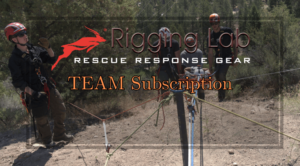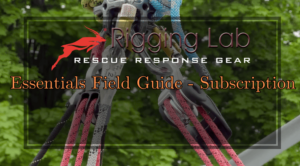Minimalist Rope Rescue Techniques
Minimalist Rope Rescue Techniques – In the world of emergency response, rapid adaptability and efficiency are crucial. For teams operating in rugged environments, where steep terrain and unpredictable conditions dictate the nature of rescues, the ability to execute fast, effective extrications with minimal gear is a game-changer. Tactical wilderness rescue is not about high-angle spectacle—it is about practical, efficient, and intelligent decision-making when lives are on the line.
The Reality of Wilderness Rescue Operations
Rescue teams in mountainous and wilderness environments often face scenarios where flat carry-outs, low-angle evacuations, and steep-angle extractions are far more common than high-angle rope rescues. While high-angle systems may be visually dramatic, real-world rescue operations demand proficiency in the fundamental, “bread-and-butter” techniques:
- Flat carry-outs – Moving patients across relatively level terrain
- Low-angle evacuations – Assisted movement on slopes less than 30 degrees
- Steep-angle operations – Evacuations on slopes between 30–60 degrees, requiring controlled descent or ascent
The key to success in these environments is the ability to execute effective, lightweight, and improvised rescue solutions. Many traditional rescue programs emphasize high-angle operations, but practical experience shows that rescue teams spend the majority of their time navigating moderate terrain with significantly fewer resources than a controlled training environment.
The Minimalist Approach to Wilderness Rescue
The philosophy behind minimalist wilderness rescue is simple: reduce complexity while maximizing efficiency. The goal is to rely on lightweight, adaptable techniques that eliminate unnecessary bulk, decrease setup time, and enable rescuers to operate effectively in remote environments.
Core Elements of a Tactical Wilderness Rescue
- Knotcraft and Rope Management: Understanding which knots are most effective for rapid deployment and improvisation is key. The ability to work off a rope coil without a bag prevents entanglements and speeds up operations.
- Anchor Selection and Rigging: Utilizing natural features—such as trees, rock formations, and logs—minimizes the need for excessive hardware. Improvised anchors and tensioning techniques ensure secure setups without overcomplicating the system.
- Litter Handling and Patient Movement: Whether using traditional stretchers, lightweight titanium break-apart litters, or even adapted carries, teams must be able to transport patients efficiently over varying terrain.
- Single and Dual Rope Decision-Making: Assessing when a single-rope system is sufficient versus when redundancy is required ensures safe and effective rescues with minimal waste in gear and time.
- Pulley Systems for Efficiency: Understanding basic mechanical advantage, including AZTEK pulley kits, allows teams to execute quick and effective extrications without cumbersome setups.
- Belay and Fall Protection Considerations: Knowing when and where to incorporate belay systems—and when to eliminate them to reduce unnecessary complexity—is a crucial skill in risk management.
Field Applications: Hands-On Learning in Tactical Rescue
A hands-on approach is vital for building confidence in minimalist wilderness rescue. Field training scenarios emphasize real-world problem-solving, requiring teams to:
- Construct functional rescue systems using only available gear
- Adapt standard techniques to the unpredictable conditions of the wilderness
- Rotate roles effectively in long carry-outs to reduce fatigue
- Implement rapid, low-tech pulley systems to move patients efficiently
- Optimize litter handling techniques for both short and extended distances
Essential Gear for Minimalist Rope Rescue
While advanced technical rescue equipment is valuable, it is not always feasible in wilderness settings. The focus in minimalist rescue is on versatility and portability, favoring lightweight and multi-functional gear such as:
- Hybrid ropes with high abrasion and cut resistance
- Break-apart titanium litters for easy transport
- Purcell prusiks made from 6mm accessory cord for climbing and securing loads
- Lightweight anchors that integrate existing natural features
- AZTEK kits for multipurpose raising, lowering, and fall protection
By stripping rescue operations down to their essentials, teams can respond more effectively and reduce reliance on excessive equipment, ensuring rescues are executed swiftly and safely.
The Future of Wilderness Rescue Training
Minimalist wilderness rescue training programs are shifting the focus away from complex, gear-heavy approaches and returning to essential, real-world skills. As teams continue to refine their methods, the emphasis remains on practical decision-making, teamwork, and adaptability in unpredictable environments.
For those looking to elevate their rescue capabilities, training in flat, low, and steep-angle evacuations—without the distraction of high-angle spectacle—provides the real-world skills needed to perform under pressure in the field.
By mastering the fundamentals and embracing a minimalist approach, rescuers can ensure that when the call comes, they are ready to respond efficiently, effectively, and with absolute confidence in their skills.
- REMS Overview and Operations
- Essential REMS Gear for Wildland Fire Rescues
- Training For Wildland Fire and REMS
Peace on your Days
Lance










